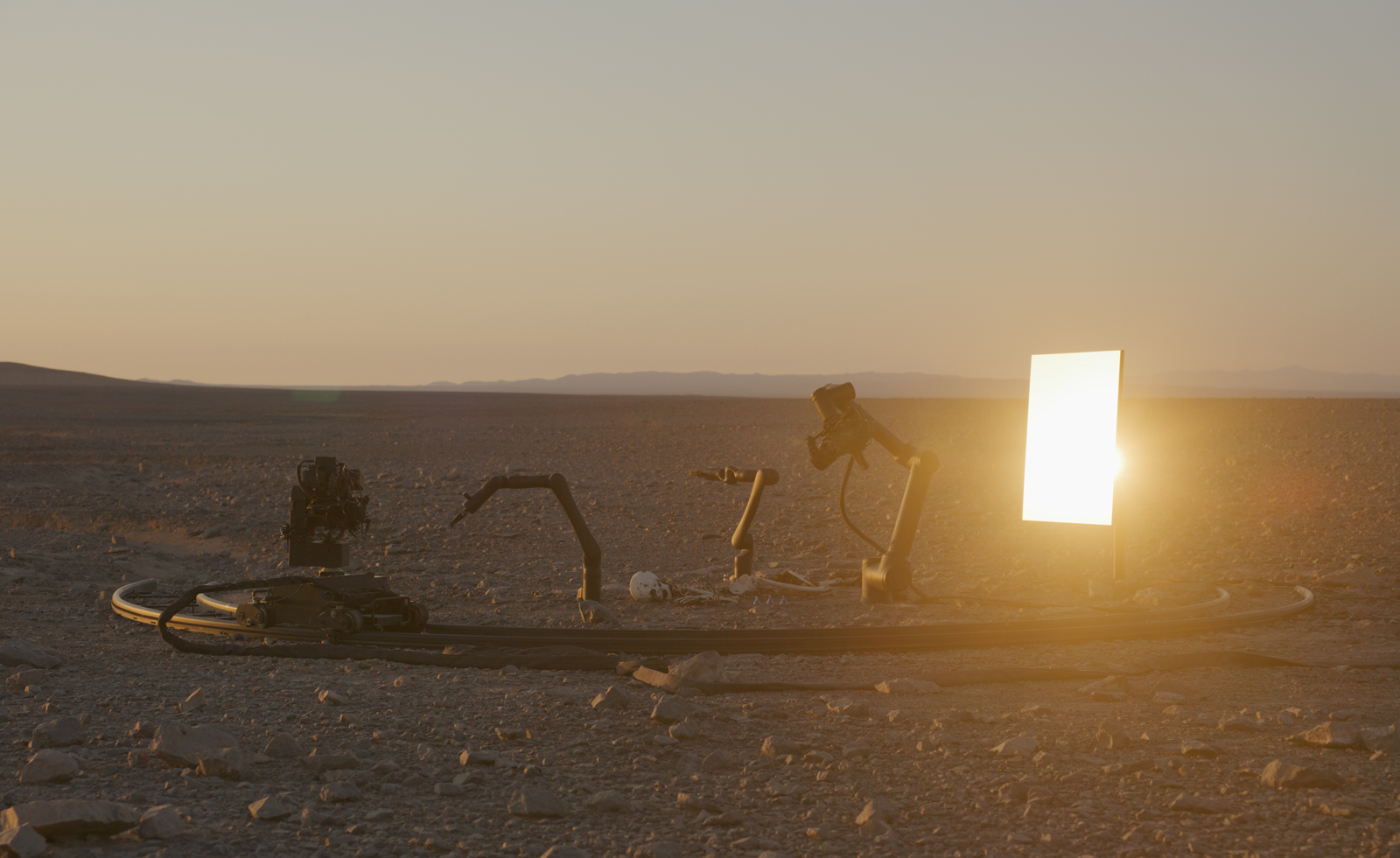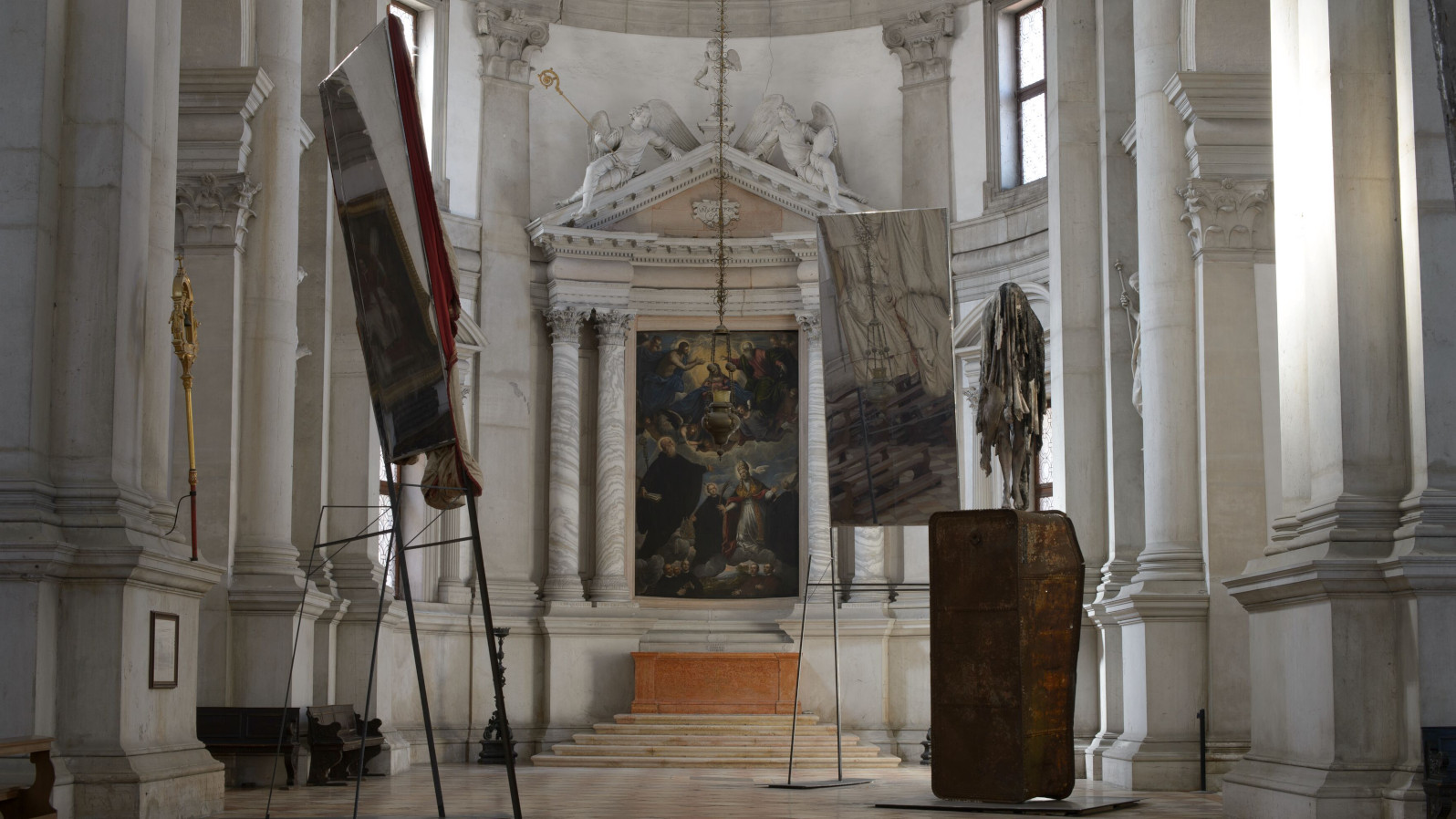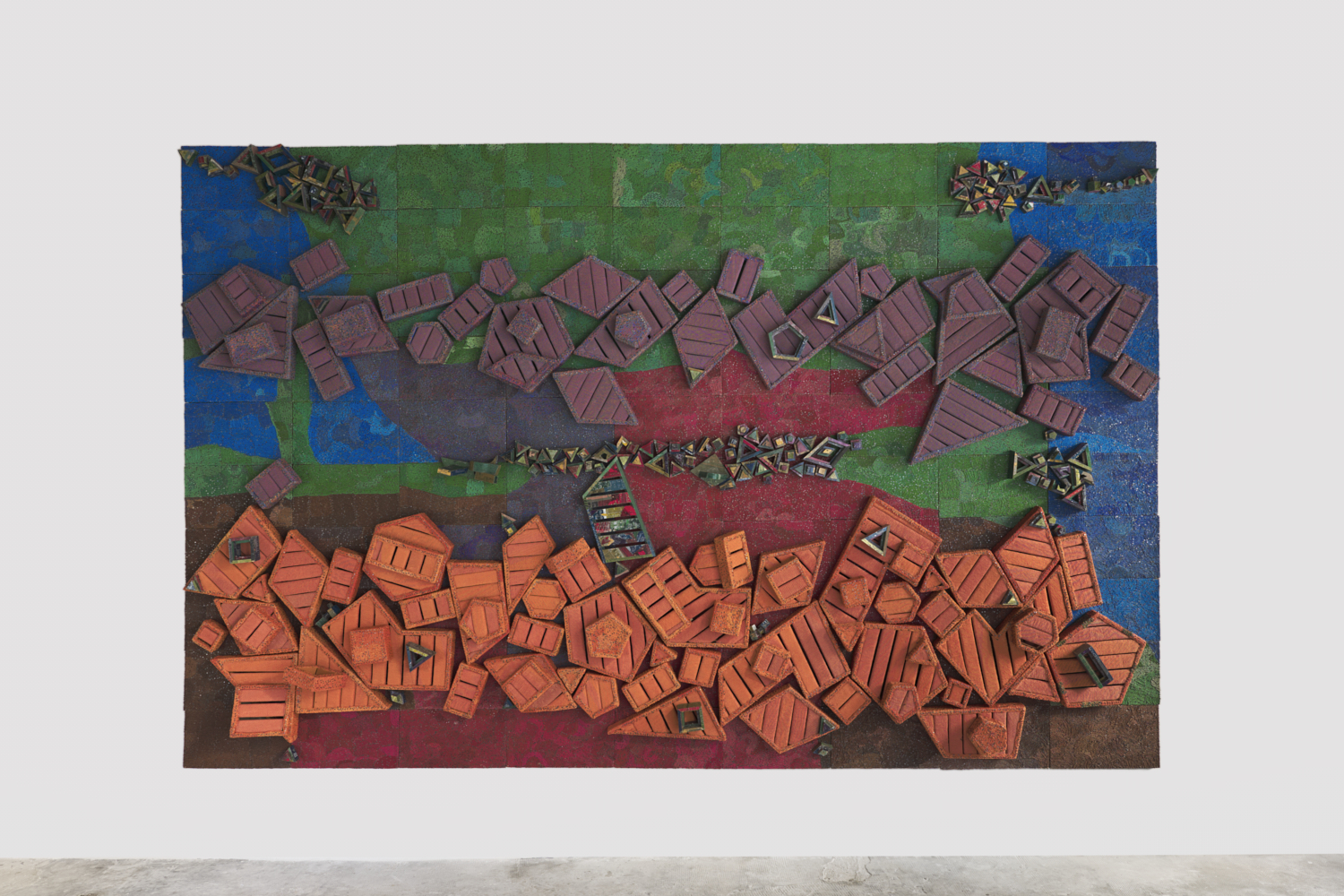Alternate worlds and end of days: Pierre Huyghe in Venice
Pierre Huyghe delves into dystopia with 'Liminal', at Palazzo Grassi’s Punta della Dogana in Venice

Pierre Huyghe is famous for his explorations of slippages in reality, alternate worlds and end-of-days scenarios. His work in film, sculpture and installation is instantly recognisable in its darkness and its evasiveness. A featureless child searches for food in an abandoned landscape, a face glitches in a digital schism and shrinks away on a towering screen in near pitch blackness.
‘Liminal’, which opened in April, coinciding with the Venice Biennale 2024, at Palazzo Grassi’s Punta della Dogana, one of the Pinault Collection’s two locations in the city, explores Huyghe’s vision on a massive scale. Pitched into blackness on entering the exhibition, we are stumbling around – the floor has varying textures and the doorways are not fully visible. Something is flickering in the dim light, a small translucent creature emerges and there is a towering, huge screen with an AI video of a face, human or animal, slipping in and out of recognition.
Harnessing cutting-edge technology, ‘Liminal’ offers a de-centred experience of being, as you enter a world where everything is out of kilter. Laced with the motifs that evoke fear, we are liberated somehow. The dream space of ‘Liminal’ is out of body, but it also taps into some elements that transcend time, such as ritual. Some works are endless and beginningless, rejecting convention.

Pierre Huyghe Umwelt—Annlee, 2018-2024
‘An exhibition is the formation of an idea: its constitution here and now,’ Huyghe says. ‘An idea appears and manifests itself, sometimes implicitly. It can also constitute other ideas and specific subjectivities. As an image, it’s situated somewhere between the sensible and the intelligible. There’s a specific relationship to space and time that comes into play in its formation – the space is no longer that of the place of exhibition, but rather the transfer of another space and another time, which superimpose themselves onto this one.’
As you pass through the cavernous galleries of the Punta della Dogana, you are never sure how to get from one gallery to another. Crossing an open walkway a barely visible film of a still body plays; on descending the stairs, another film is playing in a larger space: negotiating this exhibition makes you feel liminal and displaced.

Pierre Huyghe Camata, 2024
‘You can choose to submit to a set of conditions without knowing in advance all the ins and outs, or to multiply these conditions,’ Huyghe states in the exhibition catalogue. ‘Then, you begin to create possibilities and forms of coexistence or recreated worlds: worlds made up of worlds. You can set up loopholes, uncertainties, zones of unknowing. In order to build these resistant traps, you have to invent tools that are outside of “yourself”, sensitive tools that will allow thought to always be beginning, always emerging.‘
Passing through yet more darkened corridors, the exhibition opens out into a room containing two hovering sets of spotlights, suspended about a metre off the floor. In Offspring, 2018, masked performers occasionally appear and move between the audience and around these hovering, glowing cubes. Next, we see huge fish tanks filled with suspended rocks, broken sculpture and sea anemones.
Wallpaper* Newsletter
Receive our daily digest of inspiration, escapism and design stories from around the world direct to your inbox.
‘Fictions are vehicles that give us access to other possible and impossible worlds, to a counterfactual imagination. Such fictions – separated from the known, unconstrained by the here and now – are open to speculation, to other roads not taken. They make it possible to experience the impossible, to see ourselves from the outside.’

Pierre Huyghe. Liminal (temporary title), 2024 - ongoing.
In one room a faceless Lynchian being sits, white against a black background, a vision of horror reminiscent of The Ring or Beowulf, a monumental human emergent, not fully manifest; they shift positions to a faint soundtrack.
The exhibition reaches its peak with a huge single-channel work showing a post-apocalyptic landscape. Slipping in and out of time, the scene changes, sometimes as though moments have passed, and at other times, centuries.
‘“Liminal” is a transitory state, from which something unthought-of can emerge. It’s an inexistent being, with neither self nor world, outside of any outside,‘ says Huyghe.
Pierre Huyghe, ‘Liminal’, until 24 November 2024 at Punta della Dogana, Venice
Amah-Rose Abrams is a British writer, editor and broadcaster covering arts and culture based in London. In her decade plus career she has covered and broken arts stories all over the world and has interviewed artists including Marina Abramovic, Nan Goldin, Ai Weiwei, Lubaina Himid and Herzog & de Meuron. She has also worked in content strategy and production.
-
 Put these emerging artists on your radar
Put these emerging artists on your radarThis crop of six new talents is poised to shake up the art world. Get to know them now
By Tianna Williams
-
 Dining at Pyrá feels like a Mediterranean kiss on both cheeks
Dining at Pyrá feels like a Mediterranean kiss on both cheeksDesigned by House of Dré, this Lonsdale Road addition dishes up an enticing fusion of Greek and Spanish cooking
By Sofia de la Cruz
-
 Creased, crumpled: S/S 2025 menswear is about clothes that have ‘lived a life’
Creased, crumpled: S/S 2025 menswear is about clothes that have ‘lived a life’The S/S 2025 menswear collections see designers embrace the creased and the crumpled, conjuring a mood of laidback languor that ran through the season – captured here by photographer Steve Harnacke and stylist Nicola Neri for Wallpaper*
By Jack Moss
-
 Don't miss Luxembourg's retro-futuristic lab pavilion in Venice
Don't miss Luxembourg's retro-futuristic lab pavilion in VeniceAs the Venice Biennale enters its last few weeks, catch 'A Comparative Dialogue Act' at the Luxembourg Pavilion
By Amah-Rose Abrams
-
 ‘Everything human-made is of interest to me’: Hildigunnur Birgisdóttir in Venice
‘Everything human-made is of interest to me’: Hildigunnur Birgisdóttir in VeniceArtist Hildigunnur Birgisdóttir explores consumerism at the Icelandic Pavilion at the Venice Biennale 2024
By Hannah Silver
-
 Enter the immersive world of film noir at a disused hospital in Venice
Enter the immersive world of film noir at a disused hospital in VeniceFondazione In Between Art Film returns to Venice with ‘Nebula’, by curators Alessandro Rabottini and Leonardo Bigazzi
By Amah-Rose Abrams
-
 Josèfa Ntjam on her surreal utopias in Venice
Josèfa Ntjam on her surreal utopias in VeniceArtist Josèfa Ntjam and LAS Art Foundation bring other worlds to life with ‘swell of spæc(i)es’ at Accademia di Belle Arti di Venezia during the Venice Biennale 2024
By Hannah Silver
-
 Les Lalanne’s surreal world takes over Venice
Les Lalanne’s surreal world takes over Venice‘Planète Lalanne’, presented by Ben Brown Fine Arts, takes over Palazzo Rota Ivancich, with a cast of blue hippos, woolly sheep and giant grasshoppers
By Hannah Silver
-
 Aindrea Emelife on bringing the Nigerian Pavilion to life at the Venice Biennale 2024
Aindrea Emelife on bringing the Nigerian Pavilion to life at the Venice Biennale 2024Curator Aindrea Emelife has spearheaded a new wave of contemporary artists at the Venice Biennale’s second-ever Nigerian Pavilion. Here, she talks about what the world needs to learn about African art
By Ugonna-Ora Owoh
-
 Berlinde De Bruyckere’s angels without faces touch down in Venice church
Berlinde De Bruyckere’s angels without faces touch down in Venice churchBelgian artist Berlinde De Bruyckere’s recent archangel sculptures occupy the 16th-century white marble Abbazia di San Giorgio Maggiore for the Venice Biennale 2024
By Osman Can Yerebakan
-
 Elias Sime reflects on the destructive nature of technology in Venice
Elias Sime reflects on the destructive nature of technology in VeniceIn his solo show ‘Elias Sime: Dichotomy ፊት አና ጀርባ’ at the Venice Biennale 2024, the artist spotlights technology's destructive nature for humans and the environment
By Gameli Hamelo